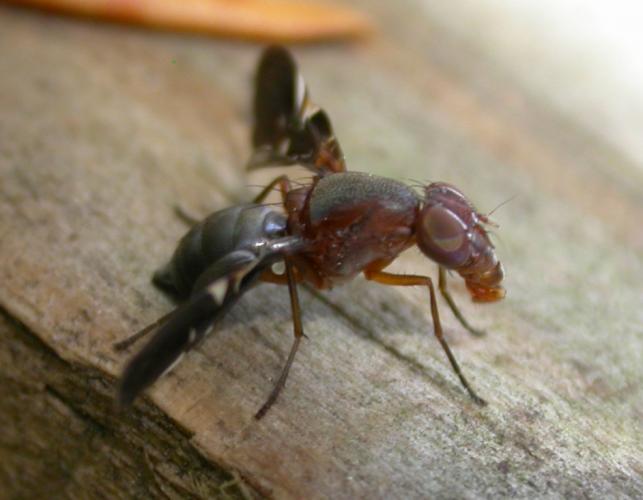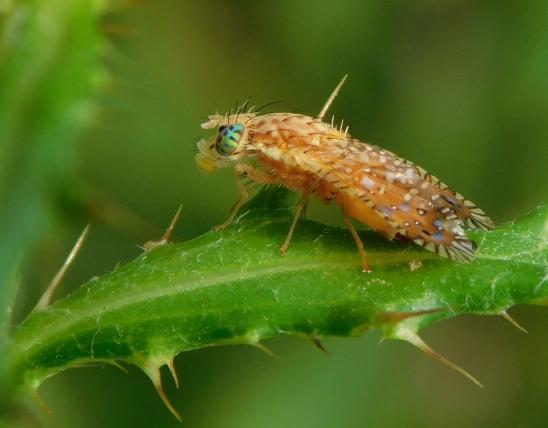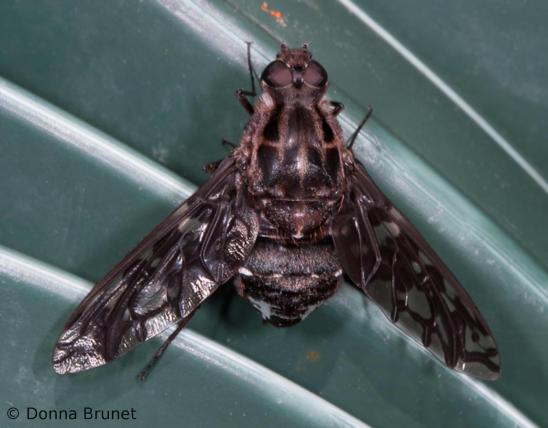
The picture-winged flies are akin to the fruit flies. They are named for the striking patterns of their spotted or banded wings, which some species, when perched, wave in circles as if "rowing." The body shape of many species is antlike.
The common species Delphinia picta has a remarkably large snout that makes the face look like an old-style gas mask.
Similar species: There are several families of flies that are allied with this group, including fruit flies, lance flies, flutter flies, signal flies, and more.
Length: ¼ to ½ inch (varies with species)
Statewide.
Habitat and Conservation
Because the larvae of most picture-winged flies feed on decaying matter, it is common to see the adults in moist places where vegetation is rotting, such as near compost heaps or in bottomlands were flood-borne plant material has piled up and is rotting.
Food
The larvae of most picture-winged flies feed on decaying matter, as in compost heaps or other places where vegetation is rotting. The larvae of some species eat living plant material, and a few are crop pests. Adults sometimes visit sap flows and may visit flowers for nectar.
Life Cycle
Like other flies, picture-winged flies begin life as an egg, which hatches to become the larval stage. The grublike larvae (in flies, they are called maggots) eat and grow and undergo a series of molts. After a seemingly inactive stage called a pupa, the individual emerges as a sexually mature, winged adult, whose main focus it to mate and reproduce.
Human Connections
Although some species consume living vegetation, most play an important role in breaking down decomposing materials, making your compost bin productive and making the world a less sloppy place. Picture-winged flies are harmless, and compared to most other flies, they are rather attractive.
Ecosystem Connections
These flies eat decomposing materials, turning it into their own relatively inoffensive bodies. Then, they may be preyed upon by a large variety of birds, such as wrens, tanagers, flycatchers, phoebes, and more, and the materials of their bodies are transformed into feathers and song. Less poetically, many flies are consumed by spiders and other predators, as well.




























